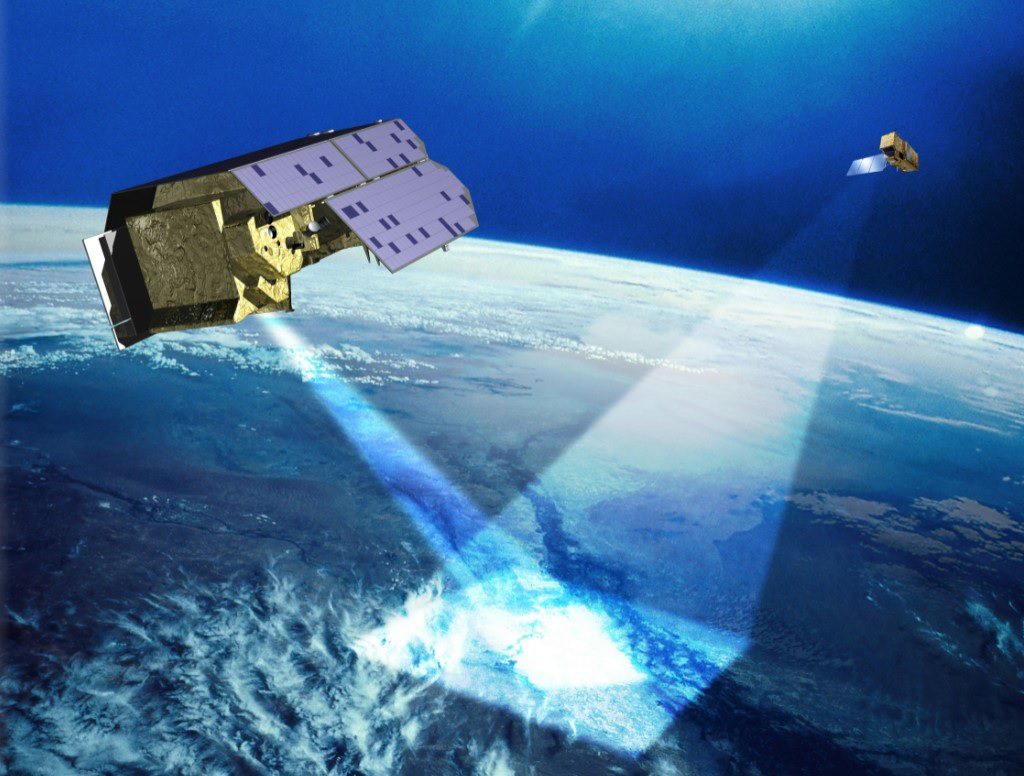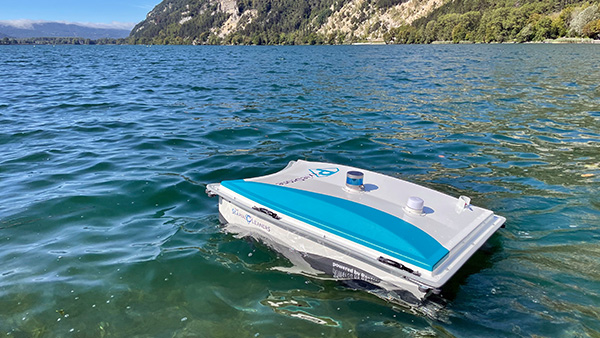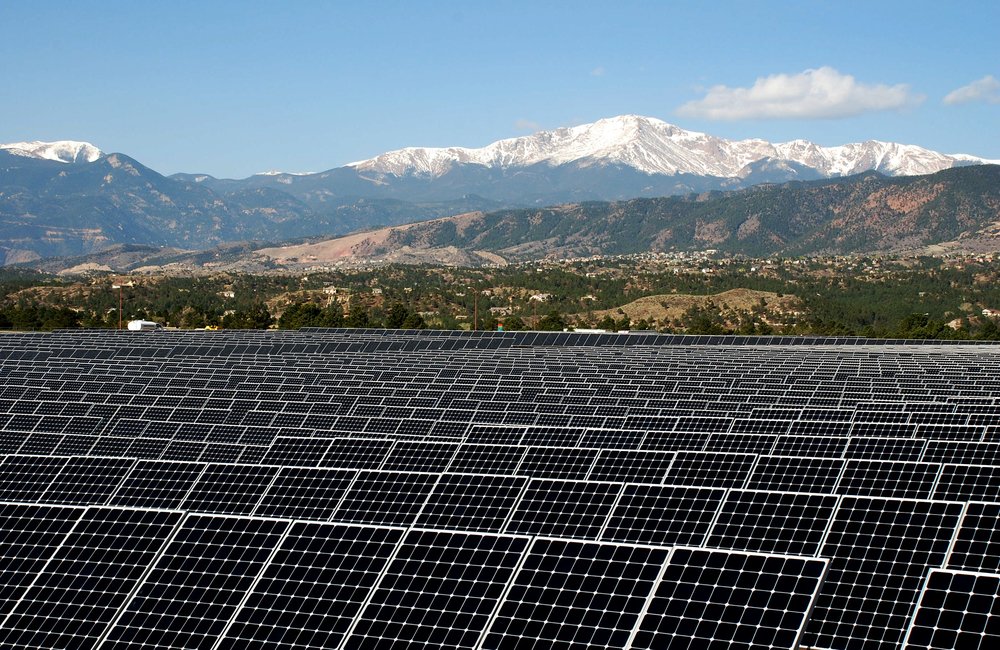Future Tech Review #12: Green Technologies To Battle Global Climate Change
No single technology will solve all of our problems, but a combination of robust measurement and automation can help ensure a greener future.
The mobilization of green technology is an imperative combination of necessity and opportunity. “Necessity,” in that our fragile world needs us to take action to address climate change, clean up pollution, and provide a better and more hopeful future for ourselves and our future generations. Opportunity then comes in the realm of innovative new solutions and the rise of potential new businesses and even whole industries to drive our society and economy into a brighter future.
Entrepreneurs, companies, and governments around the world are beginning to rise to meet these imperatives. Innovations to address climate change and pollution are being developed and deployed to the land, air, and sea . . . and even space. Satellites are monitoring climate trends and weather, robots are cleaning the seas, and batteries are becoming more and more capable of storing the renewable energy that will soon be the backbone of the global power grid.
In this edition of the Future Tech Review, we’ll take a look at some of the advancements in green technology and discuss the possibilities of a more promising future.
Monitoring the planet
The old adage of “measure twice, cut once” might need to be updated for the modern era. Maybe, “monitor everything, all the time, and apply artificial intelligence and automation to spur improvements.” A mouthful? Sure. But constant data gathering that is then refined and contextualized by AI is the trend for every industry and business sector. Green technology is no exception.
Measuring the environment, regional and global climate, and far-flung ecosystems is the backbone of climate science.
Many Teledyne companies specialize in measurement. On land, in the sea, through the air, and from space.
Take, for instance, the six hundred thousand meter (give or take several meters) view of the Earth. The European Space Agency hopes to launch the TRUTHS (Traceable Radiometry Underpinning Terrestrial- and Helio-Studies) satellite in 2030 that will specifically be designed to give us the most accurate climate data in history. Called by researchers at the National Physical Laboratory (NPL) in the United Kingdom as a “standards laboratory in space,” TRUTHS will have two primary objectives:
- To provide measurements for incoming and outgoing solar radiation between Earth and the sun
- Act as the primary calibration and benchmarking tool for orbital imaging and observation.
The satellite’s primary measurement tool — the Hyperspectral Imaging Spectrometer — will be provided by Teledyne e2v, based in Chelmsford, U.K.

Another satellite project was designed to measure the movement of Earth’s various environmental systems, such as sea level, ice sheet melting and aquifer depletion through a technique called gravity sensing. Called CASPA (Cold Atom Space PAyload), the project was being led by Teledyne e2v with partners including the University of Birmingham as science lead, XCAM, Clyde Space, Covesion, Gooch & Housego, and the University of Southampton and being funded, in part, by Innovate UK and the Engineering and Physical Sciences Research Council (EPSRC). The idea is to cool atoms to near absolute zero using lasers and use them as inferometers, which are scientific instruments that use the interference of superimposed light waves to extract information. CASPA was designed to be launched (approximate dimensions of 100 x 200 x 300 millimeters) onboard a CubeSAT.
Among us mere mortals on the ground, countless projects have been launched to measure the climate and various environmental systems. Management of the world’s forests is performed through a set of techniques and technologies collectively known as “precision forestry.” Data on forests can be gathered on the ground, or from above with drones or planes carrying lidar sensors. Both lidar and sonar are used to monitor icebergs in a project called the “Smart Ice Management Systems (SIMS).” Crucial data about the world’s oceans is often gathered with the use of lidar, such as measuring water depth near the coasts through bathymetry.
Green technology starts with measurement, and once we have the data to understand how the world is changing, we can then turn to our other powerful innovations to start doing something about it.
Cleaning up with automation
Robots often get a bad reputation. Too many movies and references in popular culture portray them as either ruthless killing machines in a post apocalyptic landscape, or sinister and uncaring automatons that have come to take people’s jobs. The reality, of course, is that robots are tools and their actions are only as good or as bad as the intentions of the humans who deploy those tools.
Robots are at their best when they are doing things that humans cannot and or will not do themselves. The “dull, dirty, and dangerous” jobs of the world. Jobs that are too big for humans to do alone, or cannot be done efficiently.
For instance, take the massive problem of plastics in our oceans and lakes. The Great Pacific Garbage Patch is an area of floating trash between North America and Japan that’s about 1.6 million kilometers in size, made up of mostly plastics. Cleaning it up is an undertaking of daunting proportions, not only because of the size of the area, but of where to put all that trash after it’s been collected.
Sophisticated systems have been developed to find plastics in the oceans, such as CZMIL Nova created by Teledyne Optech, a lidar-based bathymetric tool. The next step is to go and collect the plastics, a task often performed by automated drones. One such project, dubbed the “PixieDrone” and described as a “water roomba,” is a semi-autonomous robot developed by ECO-CLEAN Solutions which has been deployed to remove plastics and microplastics from Lake Tahoe. It can also find and remove invasive aquatic weeds that threaten to overwhelm the lake’s delicate ecosystem.

Once plastics have been collected, they need to be sorted before being sent to recycling. Not all plastics are the same and different kinds of plastics, like polyvinyl chloride (PVC) and polyethylene terephthalate (PET), are not compatible when it comes to recycling. One PVC item in a batch of PET plastic will ruin an entire batch of recycled plastics. But sorting the vast amounts of plastics collected and determining which kind is which is not a task suited to human hands at scale. Systems have been created to assist the sorting process based on light spectrums of the plastics, such as visible spectrum sorting from line scan cameras, or near-infrared (NIR) and short-wave-infrared (SWIR) sorting, X-ray sorting, and hyperspectral sorting. Robotics and artificial intelligence can then assist in the sorting process such as a robot from ZenRobotics that uses computer vision and AI.
Energy collection and storage
The old saying goes that nuclear fusion is a technology that is 20 years away . . . 20 years ago. People have been saying this since the 1950s and, as yet, fusion is not yet a viable technology (though some exciting advances have happened in recent years). As such, the best way to replace fossil fuels at the moment is through renewable energy, such as wind and solar power.

Maintaining solar, wind, and water power can be a logistical challenge as components battle the very elements that provide them with power. Solar cells can become inefficient over time, and wind turbines can break down. Automating the monitoring process of those technologies can save time and money, allowing for old or malfunctioning parts to be replaced before they can become problematic.
For instance, infrared and electroluminescence imaging cameras used from tripods or aerial drones can help inspect massive fields of the photovoltaic cells that capture solar energy. For infrared inspection, drones monitor solar cells for hot spots, which can be a sign of wear. If a solar panel’s temperature gradients across its flat service are under 10 degrees Celsius, then the panel is in good working order, but gradients over 20 degrees Celsius can cause degradation of a panel’s output. A camera like the Teledyne DALSA Calibir GX series of IR cameras can help monitor solar cells, with resolutions of 320 x 240 or 640 x 480 pixels, measuring temperatures between -25 to 600 degrees Celsius. Similar methods can be used to monitor wind turbines, looking for parts that may be overheating.
Once renewable energy is captured, it must be stored. Our future depends on the evolution of ever more powerful and stable batteries. According to the World Economic Forum, the global market for lithium-ion batteries is forecast to grow at a compound growth rate of around 20% from 2022-2027, reaching a market size of U.S. $200 billion in 2027. But as batteries grow and become more important to our power needs, economic models, and environmental forecasts, their safety needs to be assured so as to prevent . . . “combustible” situations.
To help ensure the quality assurance of batteries, line scan cameras — such as the Linea cameras from Teledyne Dalsa — have been used to inspect the electrode sheets of lithium ion batteries as they are produced on the factory floor. The cameras can scan for the thickness of the electrode sheets, find surface defects like scratches or dents, and measure the dimensions of the battery casing.
Combining innovation for a greener future
No single technology is going to halt climate change or clean up the environment. People have great hopes for innovations such as carbon capture or fusion energy, but the reality of those are nebulous, expensive, and long term. At the moment, the best approach is to focus on a the tools and solutions that we do have and creating a global community that is workings towards the best possible outcomes, such as reducing our reliance on fossil fuels, increasing the percentage of power from renewable resource, employing robust measurement with automation to tackle problems at scale.
Working together with all the tools at our disposal, humanity can employ its unending capacity of ingenuity to make a brighter, greener future.



 Future Tech Review #11: How Artificial Intelligence Keeps Getting Smarter
Future Tech Review #11: How Artificial Intelligence Keeps Getting Smarter  Future Tech Review #10: Technology fixes for a new normal
Future Tech Review #10: Technology fixes for a new normal 